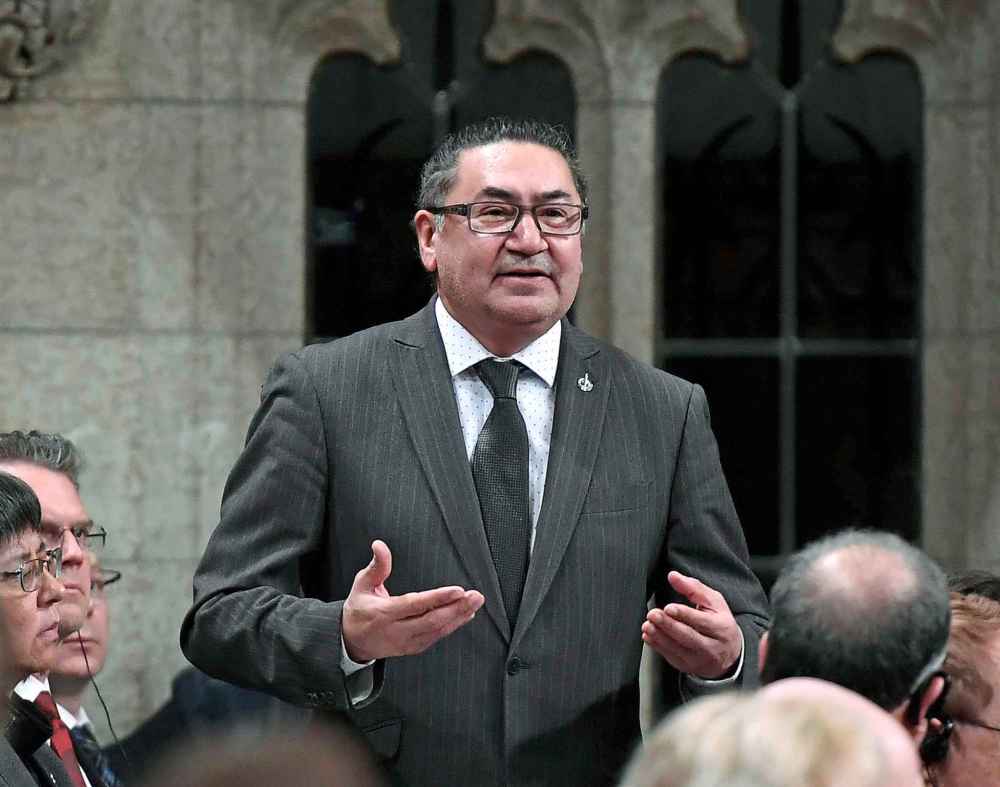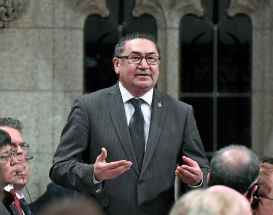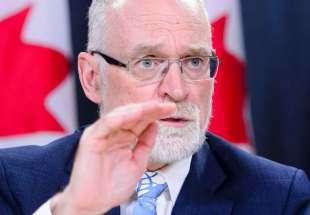Tears for reconciliation, billions for a pipeline
Read this article for free:
or
Already have an account? Log in here »
To continue reading, please subscribe:
Monthly Digital Subscription
$0 for the first 4 weeks*
- Enjoy unlimited reading on winnipegfreepress.com
- Read the E-Edition, our digital replica newspaper
- Access News Break, our award-winning app
- Play interactive puzzles
*No charge for 4 weeks then price increases to the regular rate of $19.00 plus GST every four weeks. Offer available to new and qualified returning subscribers only. Cancel any time.
Monthly Digital Subscription
$4.75/week*
- Enjoy unlimited reading on winnipegfreepress.com
- Read the E-Edition, our digital replica newspaper
- Access News Break, our award-winning app
- Play interactive puzzles
*Billed as $19 plus GST every four weeks. Cancel any time.
To continue reading, please subscribe:
Add Free Press access to your Brandon Sun subscription for only an additional
$1 for the first 4 weeks*
*Your next subscription payment will increase by $1.00 and you will be charged $16.99 plus GST for four weeks. After four weeks, your payment will increase to $23.99 plus GST every four weeks.
Read unlimited articles for free today:
or
Already have an account? Log in here »
Hey there, time traveller!
This article was published 04/06/2018 (2750 days ago), so information in it may no longer be current.
Reconciliation is here.
Wait, what?
Last Friday, NDP Romeo Saganash’s private member’s bill C-262 was passed by Parliament, ensuring that Canada’s laws come into harmony with the United Nations Declaration on the Rights of Indigenous Peoples (UNDRIP).

Passed by the UN in 2007, UNDRIP is the most comprehensive document in the world when it comes to Indigenous cultural rights, nationhood and self-determination. In 46 comprehensive legal articles, the document basically means Indigenous peoples can and should live as Indigenous peoples.
You read that right.
UNDRIP means Indigenous peoples have legal rights to maintain cultures, identities and communities, and nothing should stand in their way.
For Canada, UNDRIP is a game-changer.
Adopting it, to begin with, means no more Indian Act.
No more draconian financial and legal control of Indigenous communities by a stifling Indigenous and Northern Affairs Department.
Indigenous languages legally recognized as founding languages in Canada.
Viable Indigenous economies.
Healthy Indigenous bodies.
Success.
UNDRIP covers it all.
Canada would be legally responsible to focus on these areas comprehensively.
Unsurprisingly, UNDRIP spends a great deal of time talking about land. Approximately one-third of the document describes about how Indigenous communities must have access to traditional territories and suitable land to live healthy and productive lives.
For Canada, UNDRIP means recognizing that Indigenous peoples’ relationships to earth and water is the most crucial part of our lives. It means that the country must spend less time on pointless taxpayer-wasting court battles with First Nations and Métis over century-old land claims, and more time on what a equitable country can look like.
I know, UNDRIP is a tall order.
This is probably why the Harper government initially refused to ratify UNDRIP and then “endorsed” it as an “aspirational” document in 2010. Then, it was completely shelved.
In May 2016 Indigenous Affairs Minister Carolyn Bennett travelled to the UN and promised to “fully implement” UNDRIP. Three months later, Justice Minister Jody Wilson-Raybould announced to the Assembly of First Nations that it was “unworkable” for Canada.
It’s been one step forward and two steps back for UNDRIP.
But this has never dissuaded Saganash.
A residential school survivor who helped craft UNDRIP in the early 2000s, Saganash proposed his bill in 2016 and spent more than two years insisting that Canada fully commit to the document. He called it his career goal.
A few weeks before Friday’s vote, the Liberal party announced it would endorse C-262. Saganash’s dream, it appeared, would come true.
The vote was 206-79. It was met with cheers and a standing ovation.
That is, except for the 79 Conservative MPs who voted against it. Two of them, one from Alberta and one from Saskatchewan, even high-fived when voting against.
Now, I understand politics. I also get how private member’s bills are relatively toothless. They are desires without the weight of delivery.
But a high-five?
Or, maybe this moment, between two of Canada’s elected representatives, is the most indicative of all of Canada’s relationship with Indigenous peoples.
We are a plaything. A toy. Something to entertain.
Something Canada uses for things such as an Olympic logo. Just don’t bring up Vancouver being on stolen land.
Then, the game is over. Canada doesn’t like talking about that.
It cannot be ignored that while the federal government voted to endorse C-262 it is in the wake of spending $4.5 billion to purchase the Kinder Morgan pipeline, a decision that flies in the face of tens of thousands of Indigenous peoples and leaders.
Don’t forget how the National Inquiry into Missing and Murdered Indigenous Women and Girls was set up to fail. Or Canada’s ongoing failure to comply with orders to fix child welfare from the Canadian Human Rights Tribunal. Or, perhaps worst of all, the chronic — and solvable — issue of 150-plus Indigenous communities living under drinking-water advisories.
All of this would be cheaper than $4.5 billion.
An investment, even.
When it comes to selfies or ornaments or crying, governments love Indigenous peoples. When it comes to land issues, justice and stopping violence — never mind revitalizing communities and cultures — all that’s offered are standing ovations.
Canada needs more people like Romeo Saganash, people who believe in change.
Because right now Canada is a game. One that Indigenous peoples are losing.
Just look at the high-fives.
Reconciliation is here.
niigaan.sinclair@freepress.mb.ca

Niigaan Sinclair is Anishinaabe and is a columnist at the Winnipeg Free Press.
Our newsroom depends on a growing audience of readers to power our journalism. If you are not a paid reader, please consider becoming a subscriber.
Our newsroom depends on its audience of readers to power our journalism. Thank you for your support.









